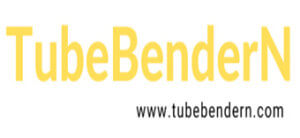The Ultimate Guide to Riveting Machine
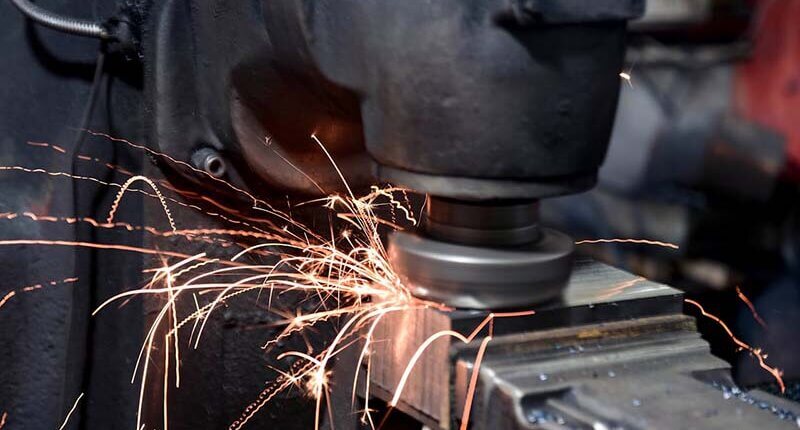
Riveting machine is a specialized equipment used to join two or more pieces of material together using rivets. Rivets are metal pins or bolts with heads that are used to fasten materials securely and generally hold the rivet in place by deforming one end of the rivet. The rivet machine automates this process, providing consistent and efficient fastening solutions for various industries. This machine improves the safety and efficiency compared to the handheld rivet gun.
Today, we will explore different types of rivet machines and see their pros & cons, and how to choose the suitable riveter machine for your production.
History of Riveting Machine
- Ancient Times: Use manual hammering techniques to rivet in construction and armor-making.
- 18th Century: Introduce the steam-powered riveting machine during the Industrial Revolution.
- 19th Century: The hydraulic riveting machine has been developed to improve the strength and consistency in joints.
- Early 20th Century: Pneumatic riveting machine appears, it provides better control and precision.
- Mid-20th Century: Introduce the electric riveting machine for more versatile applications.
- Late 20th Century: Automatic and semi-automatic riveting machines have appeared one after another, improving production efficiency and reducing labor costs.
- 21st Century: Riveting technology is constantly innovating and can be automatically integrated with robots to meet the production accuracy and speed requirements of various industries.
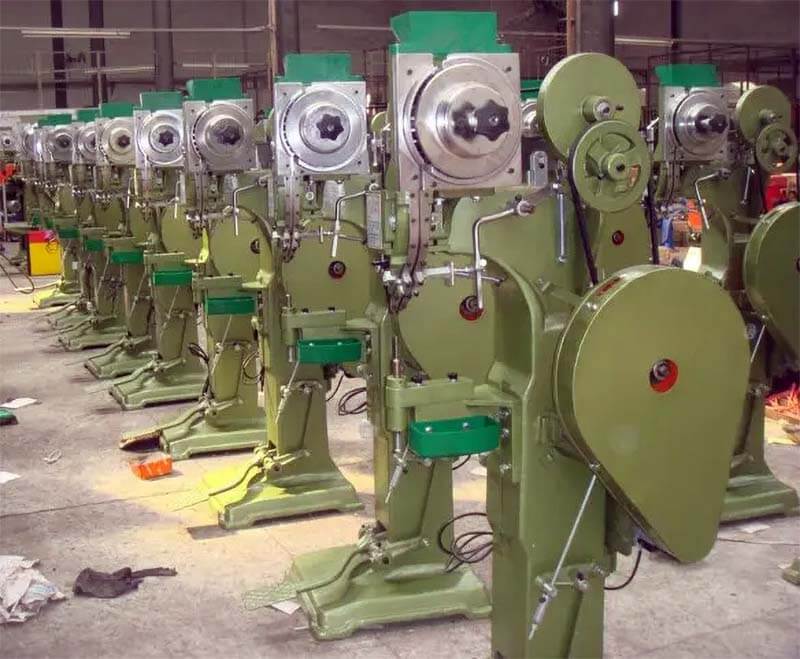
Types of Riveting Machines by Drive Mechanism
According to different driving methods, riveting machines can be divided into the following categories, and they are also suitable for different industries.
Manual Riveting Machine
The manual riveting machine is operated by hand, using physical force to drive the rivet into the materials that you want to connect. These machines include hand riveters and squeeze riveters.
Application Areas
These manual riveters are suitable for small-scale projects and repairs. They are small in size and light, so easy to carry.
Advantages of Manual Riveting Machine
- Low Cost
- No external power is needed
- Portable and easy to use
Disadvantages of Manual Riveting Machine
- Labor-intensive
- Limited force and precision
- Not suitable for large-scale production
Pneumatic Riveting Machine
Pneumatic riveting machine uses compressed air to generate the force needed to drive rivets. These machines are generally equipped with air cylinders and valves to control the riveting process.
Application Areas
For the applications that need high speed and consistent riveting, such as automotive, aerospace, and shipbuilding industries.
Advantages of Pneumatic Riveting Machine
- High speed and efficiency
- Consistent force and precision
- Suitable for high-volume production
Disadvantages of Pneumatic Riveting Machine
- Need compressed air supply
- Can be noisy
- Higher cost compared to manual machine
Hydraulic Riveting Machine
Hydraulic riveting machine uses a hydraulic cylinder to drive rivets. These machines are known for their high force output and precision.
Application Areas
Suitable for heavy-duty applications, such as construction, railways, and large-scale manufacturing.
Advantages of Hydraulic Riveting Machine
- High force and precision
- Be capable of handling large and heavy rivets
- Suitable for thick and hard materials
Disadvantages of Hydraulic Riveting Machine
- Need hydraulic power unit
- Higher request for maintenance
Electric Riveting Machine
Electric riveting machine uses an electric motor to drive the riveting process. Depending on different manufacturer, the machine can be corded or cordless.
Application Areas
The machine is suitable for electronic manufacturing, appliance assembly, and other industries requiring precision and versatility.
Advantages of Electric Riveting Machine
- Consistent and precise control
- Suitable for a wide range of materials and rivet sizes
Disadvantages of Electric Riveting Machine
- Higher cost than other molds
- Need more professional maintenance
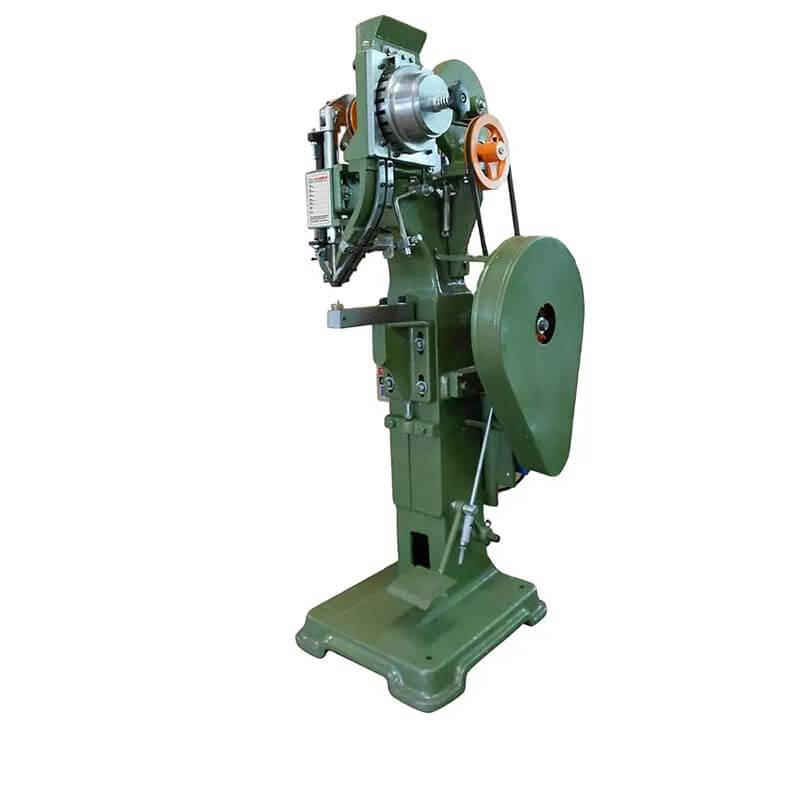
Types of Riveting Machines by Operation
Riveting machines can also be classified based on their operation mechanisms. Each type is designed for specific applications, providing different efficiency, accuracy, materials, and joint requirements.
Orbital Riveting Machine
Orbital riveting machine forms rivets by rotating and applying pressure. This method is particularly suitable for riveting delicate or fragile materials.
Applications
Suitable for high-quality and beautiful joints, such as in the automotive and electronics industries.
Advantages of Orbital Riveting Machine
- Produces smooth, high-quality rivet heads
- Low noise and vibration
- Suitable for delicate and sensitive materials
Disadvantages of Orbital Riveting Machine
- Higher initial cost
- Slower cycle times compared to impact riveting
Radial Riveting Machine
The radial riveting machine uses an eccentric gear shaft and a spherical pair to form an angled plum blossom-shaped motion. The rivet head does not rotate, so it has high safety performance, the rivet surface is smooth after riveting, and riveting can be done without special clamping of the workpiece.
Applications
Suitable for the industries, such as Auto parts, electronics, aerospace, etc.
Advantages of Radial Riveting Machine
- Low noise and vibration
- High precision and control
- Produce strong and reliable joints
Disadvantages of Radial Riveting Machine
- Higher cost
- More complex setup and maintenance
Impact Riveting Machine
Impact riveting machines use a hammering action to drive the rivet into the materials being joined. The machine delivers a single, high-force impact to deform the rivet.
Applications
Suitable for high-speed production, such as automotive and appliance manufacturing.
Advantages of Impact Riveting Machine
- High-speed operation
- Suitable for high-volume production
- Relatively simple and robust
Disadvantages of Impact Riveting Machine
- High noise and vibration
- This can cause stress on the materials being joined
Automatic Riveting Machine
The automatic riveting machine is designed for high-volume production, with automated feeding and riveting processes. This machine can process the riveting operation with minimal human intervention.
Applications
Ideal for mass production in automotive, aerospace, and electronics industries.
Advantages of Automatic Riveting Machine
- High efficiency and productivity
- Consistent and repeatable results
- Reduces labor costs
Disadvantages of Automatic Riveting Machine
- High initial investment
- Requires more complex setup and maintenance
Press Riveting Machine
The press riveting machine uses a stamping machine and a special connection die through an instantaneous high-pressure processing process. According to the cold extrusion deformation of the plate material itself, a stress-free internal inlaid dot with a certain tensile and shear strength is formed, which can connect two or more layers of plates of different materials and thicknesses.
Applications
Press riveting machines are mainly used for riveting solid rivets, semi-tubular rivets, and hollow rivets. They can rivet one end of a solid nail into a flat head or a mushroom head, and can also roll a hollow nail into a flanging effect.
Advantages of Press Riveting Machine
- Suitable for precise work
- Versatile with different drive mechanisms
Disadvantages of Press Riveting Machine
- Slower cycle times compared to impact riveting
- Requires careful setup and adjustment
Clinching Machine
Clinching machines join materials by creating an interlock without using a separate fastener. The machine deforms the materials to form a mechanical interlock.
Applications
Commonly used in sheet metal fabrication and automotive body assembly.
Advantages of Clinching Machine
- No need for additional fasteners
- Creates strong and durable joints
- Environmentally friendly (no consumables)
Disadvantages of Clinching Machine
- Limited to specific materials and thicknesses
- Requires precise alignment and setup
Self-Pierce Riveting Machine
Self-pierce riveting machines drive a rivet through the top layer(s) of material, piercing it and then flaring out to join the bottom layer(s). This method does not require pre-drilled holes.
Applications
Riveting for automotive sheet metal parts, sheet metal riveting for washing machines, air conditioners, and other household appliances, sheet metal riveting for computer cases and other electronic devices, riveting for exhaust fan housings, busway riveting, elevator sheet metal riveting, and other applications where thin sheets need to be riveted.
Advantages of Self-Pierce Riveting Machine
- No need for pre-drilled holes
- Suitable for joining dissimilar materials
- High strength and reliability
Disadvantages of Self-Pierce Riveting Machine
- Higher initial cost
- Requires specialized rivets and tools
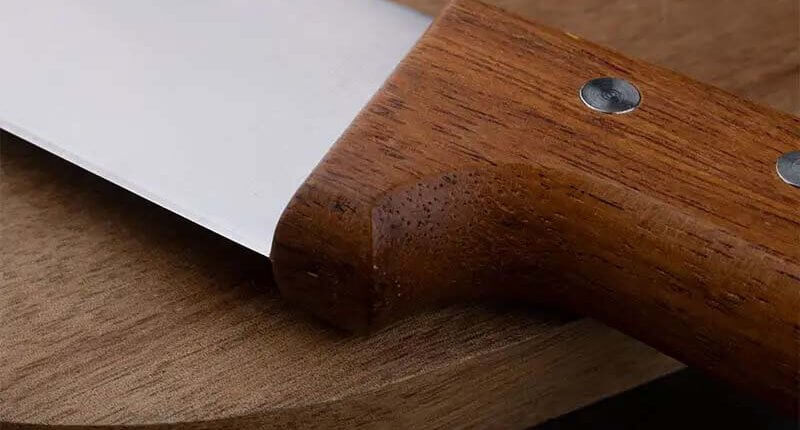
How Rivet Machine Works?
Riveting is a mechanical fastening process used to join two or more materials together by inserting a rivet through aligned holes in the materials and then deforming the rivet to create a permanent joint. The deformation of the rivet can be done in various ways, such as by hammer, press, or using specialized tools and machines.
The Main Components of a Riveting Machine
A typical rivet machine generally consists of several key components as below, they play an important role in the riveting process.
- Rivet Feed System: Rivets can be supplied by manual or automatic. In the automatic systems, the rivets are stored in the hopper and fed into the machine by a feeder mechanism.
- Driving Mechanism: The driving mechanism provides the power to deform the rivets. The current drive systems can be roughly divided into manual, pneumatic, hydraulic, and electric.
- Anvil: Used to support the workpiece and the rivet, absorbing the force applied during the riveting process.
- Tooling/Die: The tooling or die is designed based on the type of rivet and the required rivet head form. They are used to contact the rivet and deform it to the desired head shape.
- Control System: This is used to adjust the operation of the machine to ensure consistent and precise results.
- Frame and Base: This provides support and stability to the machine, ensuring a smooth riveting process.
Step-by-Step Process of Riveting
The riveting process may vary slightly depending on the type of machine. Here is a general step-by-step outline:
- Preparation: Ensure precise alignment of the material’s holes, and choose the appropriate rivet based on material thickness and type.
- Rivet Insertion: Insert the rivet into the aligned holes of the materials. In the automatic system, the rivet will be fed automatically.
- Positioning: Place the materials with the inserted rivet onto the anvil of the machine, and ensure the material and rivet are positioned correctly under the tooling.
- Force Application: Turn on the machine and apply the force to the rivet.
- Forming the Rivet Head: The anvil and tooling shape the rivet head to the desired form.
- Inspection: Inspect the riveted joint to ensure it meets the quality standard.
Applications of Riveting Machine
Many industries need to use the rivet machine to create strong joints. We just briefly mentioned it above, let’s take a look at the details below.
- Automotive Industry: Riveting machines are widely used in the automotive industry for assembling car bodies, frames, and various components such as brake linings, airbags, and seat structures.
- Aerospace Industry: Rivet machines are used for assembling aircraft frames, skin panels, and other critical components.
- Construction Industry: The rivet machine is used in the construction industry for fabricating steel structures, bridges, and heavy machinery.
- Manufacturing Industry: In general manufacturing, riveting machines are used for producing appliances, furniture, tools, and various consumer goods.
- Electronics Industry: The electronics industry uses riveting machines to assemble components and housings for computers, smartphones, and appliances.
- Railway Industry: The rivet machines are used to assemble rail cars, tracks, and other railway infrastructure, and create safe and durable joints.
- Shipbuilding: Riveting machines play an important role in constructing ships and submarines, making strong joints for marine applications.
- Medical Device Manufacturing: The rivet machine is also used to assemble medical devices and equipment.
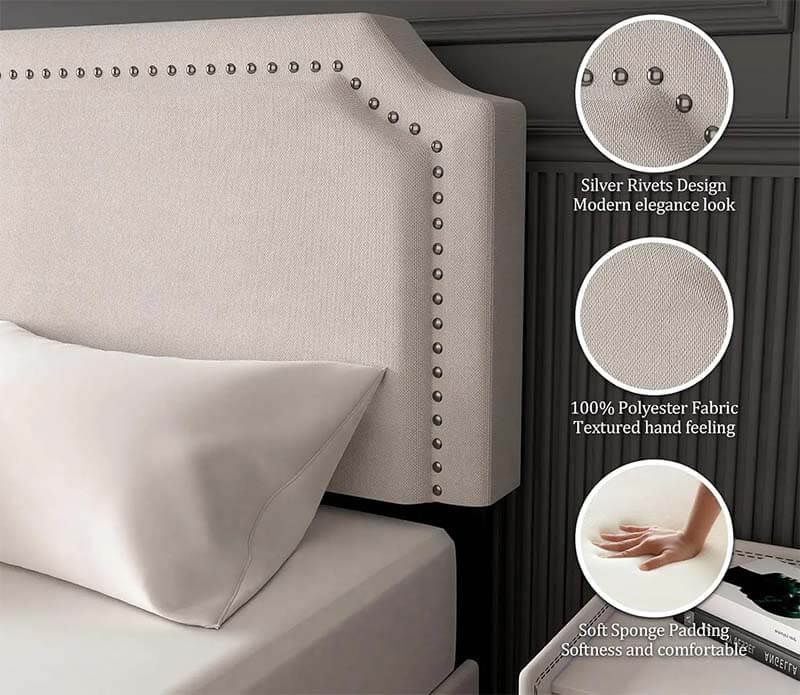
The Comparison of Riveting Machine with Other Fastening Methods
Rivet is only one of the ways to connect two pieces of item together, there are also other fastening methods to do a similar job as riveting, let’s take a look and compare.
Riveting vs. Welding
- Strength: Both of them can make strong joints, but welding can create stronger bonds for certain applications.
- Heat Impact: Making joints with rivets does not include any heat, this is a great choice for heat-sensitive materials because welding will cause heat-related distortions and material changes.
- Disassembly: Riveted joints can be removed sometimes without serious damage. But, welded joints are permanent.
- Application: Welding is normally used for creating seamless joints in metal materials, but riveting is versatile for different materials.
Riveting vs. Screwing
- Strength: Riveting provides stronger and more vibration-resistant joints than screwing.
- Assembly and Disassembly: Screw is easy for disassembly and reassembly.
- Speed: This depends on which tooling or equipment you use. In large-volume production, the automated riveting can be faster than screwing.
- Cost: Both methods are cost-effective, you need to choose based on your specific use.
Riveting vs. Adhesive Bonding
- Strength: Rivets can provide immediate mechanical strength, but the adhesive needs time to solidify.
- Material Compatibility: Adhesives can bond various materials without the need for holes, but generally the riveting requires aligned holes.
- Durability: Compared with the adhesives, the riveted joints are less affected by temperature and moisture.
- Application: Adhesives are suitable for smooth, clean surfaces. But, riveting is better for applications requiring mechanical fasteners.
How to Choose the Right Riveting Machine?
When choosing the appropriate riveting machine need to consider the below factors and combine them with your actual production needs. You can also consult with our engineering.
Material Type
- Compatibility: Make sure the machine you choose can handle the material you are going to proceed with, whether it’s metal, plastic, leather, or composites.
- Thickness: This machine must be able to join various material thicknesses as you requested.
Rivet Size and Type
- Diameter and Length: Choose a machine that accommodates the specific sizes of rivets needed for your application.
- Type of Rivet: The tooling or mold needs to be customized according to your rivet type, such as solid, semi-tubular, or blind rivets.
Production Volume
- Low or High Volume: According to your production needs, you need to choose the machine that can provide low or high production volume.
Precision and Quality Requirements
- Tolerances: Different machines have different riveting accuracy, so it is important to clarify the riveting accuracy and then determine the machine type.
- Appearance Quality: For visible joints, the machine needs to produce smooth and beautiful rivet heads.
Budget
- Cost: After checking the machine can meet all your production needs, then you can see whether the cost of the rivet machine is within your budget.
FAQ’s about Riveting Machine
Q: What size hole should be drilled for press nuts, studs, and screws?
A: The hole size should depend on the diameter of the nuts, studs, or screws. The hole size should be 0.05mm to 0.1mm larger than the nuts, studs, or screws. For example, if your nuts diameter is 5mm, the hole size should be 5.05mm to 5.1mm.
Q: Can the riveting machine be customized according to specific requirements?
A: Sure, we are making various types of riveting machines to meet different production requirements, for small volume production to large volume production, from thin material to thick material, from different types of nuts, studs, and screws, from manual feeding material to automatic feeding material, etc.
TubeBenderN is the manufacturer of various types of riveting machines in China. If you are looking for such equipment and are not sure which type is suitable for your production needs, feel free to contact our engineering team today, they will find the best solution for you!
